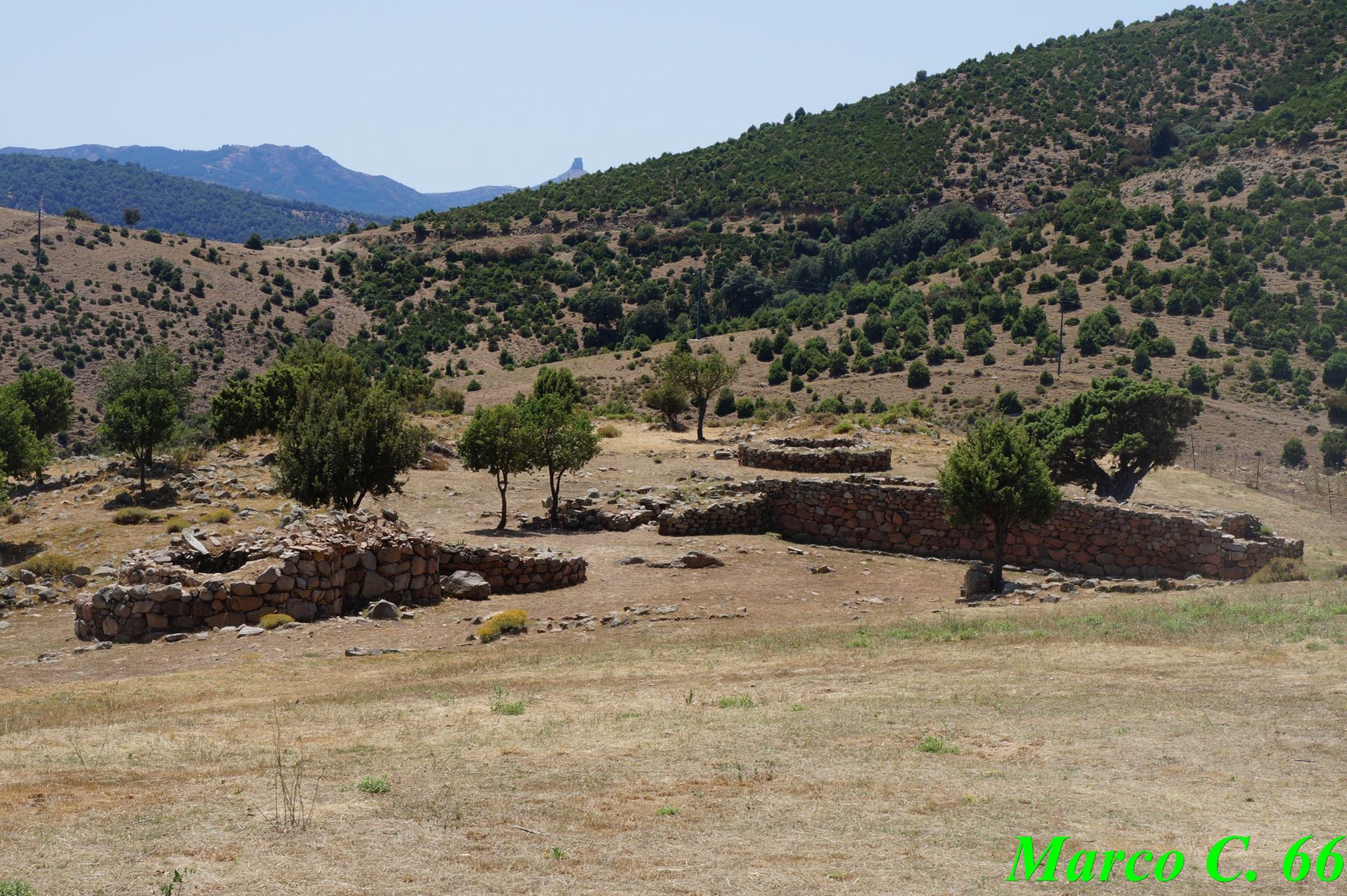“The archaeological complex of S’Arcu ‘e is Forros occupies a vast territory marked on maps with the toponym Inter Abbas due to the presence of the Bacu Alleri river to the West and the Rio Iscra Abatrula to the East, both tributaries of the Flumendosa.”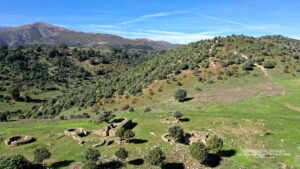 The site, located a few kilometers from the Corr’e Boi pass under the Allue in fogu peak (1300 m above sea level), encompasses an area of 18 hectares, featuring the single-tower nuraghe Lotzoracesa, built on a hill from which the adjacent village, the underlying river, and a vast area enclosed between Corr’e Boi and the path leading towards bau Mela could be monitored. On a spur of granite rock that slopes down towards the river, the corridor nuraghe of Intere Abbas stands with its entrance facing South, along with the small giant’s tomb, constructed just a few meters away.
The site, located a few kilometers from the Corr’e Boi pass under the Allue in fogu peak (1300 m above sea level), encompasses an area of 18 hectares, featuring the single-tower nuraghe Lotzoracesa, built on a hill from which the adjacent village, the underlying river, and a vast area enclosed between Corr’e Boi and the path leading towards bau Mela could be monitored. On a spur of granite rock that slopes down towards the river, the corridor nuraghe of Intere Abbas stands with its entrance facing South, along with the small giant’s tomb, constructed just a few meters away.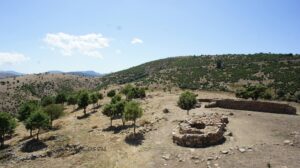 The first settlement of S’Arcu ‘e is Forros dates back to the evolutionary phases of the Middle Bronze Age (1500-1400 BC). The settlement arose in an area chosen for its water wealth and proximity to important transhumance routes towards the valleys of the current Lake Flumendosa or the highland of Margine, in the territory of Talana, from which one could quickly reach the plains of Lotzorai and Tortolì.
The first settlement of S’Arcu ‘e is Forros dates back to the evolutionary phases of the Middle Bronze Age (1500-1400 BC). The settlement arose in an area chosen for its water wealth and proximity to important transhumance routes towards the valleys of the current Lake Flumendosa or the highland of Margine, in the territory of Talana, from which one could quickly reach the plains of Lotzorai and Tortolì.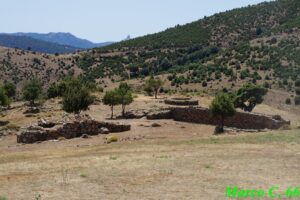 In the first construction phase, the village consisted of several huts with entrances to the South, built without a precise order on the highest part of the hill, partly leaning against small outcrops of granite rock.
In the first construction phase, the village consisted of several huts with entrances to the South, built without a precise order on the highest part of the hill, partly leaning against small outcrops of granite rock.
The archaeological exploration has revealed abundant ceramic remains from the oldest layers (1400 BC), including cooking pots, some of which have internally decorated surfaces in a comb pattern, various jars with thickened rims at an angled section or with short cylindrical necks, and open-shaped carinated bowls. The more recent layers mainly contained jars with cylindrical necks and reversed elbow handles, large hemispherical bowls in open shape, and numerous crushing hammers made from pebbles sourced from the underlying river. The interiors of the huts preserved, at the time of excavation, substantial layers of compact clay flooring, compacted around the hearths, and portions of plaster at the base of the walls.
In the final Bronze Age (1200 BC), three “megaron” temples were built above the pre-existing huts of the nuragic settlement (Excerpt from “Nel segno dell’Acqua” by Maria Ausilia Fadda).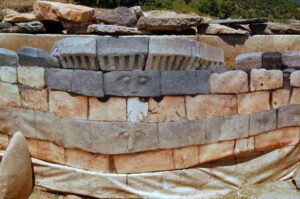 The photos of the archaeological complex S’Arcu ‘e is Forros in Villagrande Strisaili are by Marco Cocco and Maurizio Cossu.
The photos of the archaeological complex S’Arcu ‘e is Forros in Villagrande Strisaili are by Marco Cocco and Maurizio Cossu.

